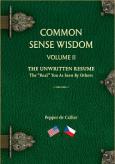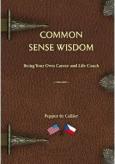What is the Source of Your Power?
The most common reaction I get from leaders when I ask this question is a blank stare. Perhaps the reason for this reaction is that they realize that the answer they give will summarize, in a sentence, who they are, what type of leader they are, and how in tune they are to the 21st century.
It has been estimated that approximately 80% of people in leadership positions are “alpha” personalities—driven and willing to do whatever it takes to achieve their success quickly. These people think in straight lines: point A to point B—identify the problem, identify the solution, and then POW! Make it happen! Just do it! This style of leadership is especially effective if you happen to be in a burning building or in a submarine that springs a leak. The fireman and the submarine commander have their job and their rank as their source of leadership power, and in situations like this they can even yell at you and you don’t mind because your very survival is at stake.
If, however, you don’t happen to be in a burning building or a submarine with a hole in it, this style of leadership doesn’t really deliver long-term, sustainable positive results. For the past two or three decades, we have been calling this the Cold War model of leadership. It’s a style of leadership that derives its power, its authority, from rank in the organization and title. In fact, years ago, a wooden desk versus a metal one, a large living plant in one’s office, the thickness of the carpet compared to the carpet outside the office, were also some of the sources, or symbols of power. These things were apparent immediately, there was no question who fit where in the pecking order and it was clear that the person with the wooden desk, living plant, and thicker carpet would have the best ideas and the most insightful observations. Those who had the metal desks, crummy carpet and plastic plants were indeed fortunate to have the opportunity to agree with everything the boss said, listen intently, laugh at the boss’s jokes and, most important, do what they were told. NOW!
Unfortunately, too many CEOs and leaders at other levels in business today, haven’t gotten the memo about 21st century leadership: your title and rank, as a source of power, has never meant less than it does today.
Former President Bill Clinton summed it up eloquently when, in describing his hopes for the United States in foreign policy, said, “Our goal should be that we will be known for the power of our example and not the example of our power.” And that, dear reader, sums up the true, sustainable source of leadership power in the 21st century world of business.
Do you want to have a powerful impact on those you lead? Do you want people to listen to your every word and be ready, willingly and enthusiastically, to jump into action when you need them to? Let’s take it a step further; do you want them to be proud of you as a leader and actually want to work for you? In the hyper-competitive world of the 21st century, people are looking for something in their leaders they have never looked for so intently—authenticity, integrity, and an example. These are the drivers that will take people beyond spurts of threshold performance to sustained full-engagement. These are the differentiating elements of talent retention and leadership in the 21st century.
You don’t have to be a CEO or lead a large number of people to display this type of leadership behavior. In fact, displaying this type of leadership behavior just might be the one thing that differentiates you from another and gets you promoted to a position leading a large number of people or being a CEO.
What type of leader are you?
Do you smell something burning?????




